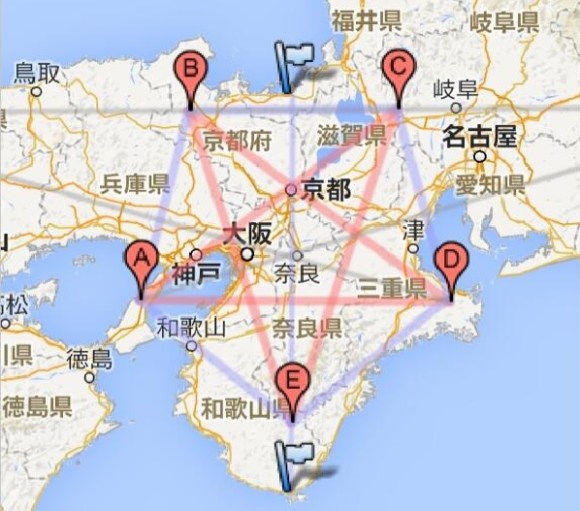
The pentagram is a simple shape with deep meanings. No matter what faith or race we come from that little star seems to conjure up thoughts and feelings more than mere circles or dodecahedrons could ever do to the masses.
So when someone tweeted an image from Google Maps with a pentagram laying upside-down over much of the Kansai Region of Japan, it generated quite a bit of buzz along with 13,000 retweets. It was created by joining several religiously significant locations in the area and has Japan’s ancient capital of Nara smack dab in the center.
■ Points of the star
This pentagram links five special locations together at a distance of one degree of latitude or (assuming they are using a spherical estimation of the earth) about 111km (69 miles). These locations are (using the letters from the image):
A: Izanagi Jingu (Awaji, Hyogo)
This shrine complex is named after Izanagi, the father of Japan in a creation myth. In the legend he and his deity mate Izanami give birth to all the islands of Japan with Awaji Island being the first.
B: Toyuke Daijinja (Fukuchiyama, Kyoto)
Known as an “original Ise Shrine” which means before the creation of Ise Grand Shrine it was the holder of Toyuke Omikami, the goddess of farming and a major deity of the Shinto religion.
C: Mount Ibuki (Ibigawa, Gifu / Maibara, Shiga)
Mount Ibuki has long been a location of strategic importance during more tumultuous times of Japan’s history, but the mountain’s area also contains legends of plants and soils with remarkable healing properties.
D: Ise Jingu (Ise, Mie)
Considered one of the preeminent shrines of Shinto, Ise is actually a sprawling complex of over 100 smaller shrines. It contains the scared mirror Yata No Kagami, a gift given to the imperial family by the goddess Amaterasu.
E: Kumano Hongu Taisha (Tanabe, Wakayama)
This major Shinto shrine can be found well into the Kii mountains of Wakayama. This area is one of the major pilgrimage stops and was declared a World Heritage Site in 2004.
■ Bobosei (Five-Pointed Star)
During the time when Nara was the capital, the pentagram was a powerful symbol of protection used by onmyodo, a type of mysticism derived from Chinese beliefs such as yin and yang and the five elements. The most famous practitioner (onmyoji) of this religion was Abe no Seimei who used the pentagram as a seal to protect from evil as well as his family mon (crest).
Here’s a demonstration of the pentagram in use from the smash hit online music video Let’s Go! Onmyoji.
About a millennium ago onmyoji had a fair bit of clout on the politics of Japan and were called upon by Japan’s elite to handle tricky deeds such as exorcisms and fortune telling. There were also advised when it came to the establishment of things such as the capital, Nara.
So if this tweet’s theory is correct, it’s not surprising that the location would be given some sort of mystical protection through onmyodo. Actually, as many comments pointed out, this theory was not very new either. It was mentioned in several manga and books over the years such as Tenjo Tenge by Oh! great or Sengoku Jietai by Ryo Hanmura.
With the sense that this theory is probably right we’re left with two rather large questions: Why is it upside-down? and Does Tokyo also have some sort of mystical protection?
■ We’re all screwed
Again, this is all under the presumption that this pentagram was intentionally created. First, it’s a little odd that the pentagram is seen with the two bottom points facing upwards which is generally considered bad mojo around the world. The simple assumption would be that the onmyoji of 8th century Japan weren’t overly concerned with how their pentagram would look on Google Maps.
Or were they? The following is a 1656 recreation of the Gyokizu, a map of the Yamato Kingdom created during the Nara period about 900 years before by a Buddhist monk to illustrate the routes of the land. Although there is debate on how authentic this map is to the original(s) it seems to show that folks back then had a pretty decent enough grasp of geography to not accidentally put the pentagram upside-down.
Of course, there’s the possibility that an “upside-down” star may have had no signifigance in onmyodo whatsoever. But there’s also the possibility that someone had made that particular onmyoji a bad cup of tea one day and he just decided to hex everyone in Kansai for eternity.
As for Tokyo, there apparently is a magical seal protecting it as well. Much like the Nara pentagram, the Tokyo shield uses the five elements as laid out in China’s Wu Xing philosophy. The elements are often orientated in a five star pattern and each also has characteristic colors.
So if you’re in the Tokyo area you might want to check out the Goshiki Fudo. Fudo is short for the deity Fudō-myōō also known as Acala. If you happen to be around a Buddhist temple you can’t miss his statue. He’s usually carrying a sword, is engulfed in flames, and has a really pissed off look on his face.
Despite his menacing appearance, he is actually a benevolent force to escort those on the path to enlightenment. Word is that the Goshiki Fudo are five Acala statues with different colored eyes representing each of the five elements.
1 – Black Eyes (Water), Ryusen Temple, Meguro Ward
2 – White Eyes (Metal), Konjoin, Toshima Ward
3 – Red Eyes (Fire), Nankoku Temple, Bunkyo Ward
4 – Green Eyes (Wood), Saisho Temple, Setagaya Ward
5 – Yellow Eyes (Earth), Saisho Temple, Edogawa Ward
*Notice 4 and 5 are different temples even though their names are pronounced the same.
That being said there are a whole bunch of Acala statues everywhere, so true locations may vary if there are any to begin with. Also, word on the net is that the recent construction of the Sky Tree has screwed with this feng shui of Tokyo and opened up the door to misfortune for the metropolis. This may account for the tower’s poor attendance.
Whether or not this is true is anyone’s guess. Meanwhile though, living near the middle of Kansai’s upside-down pentagon has brought closure to a lot of questions regarding my own life such as why I’m not devastatingly handsome or absurdly rich, and why my toast got burned this morning even though I swear I had set the timer to the usual position!
Source: Twitter, My Game News Flash, Green Shinto, Fudo Miyo-O
Video: YouTube – bussan00
Images: Abe no Seimei mon – Wikipedia-Mukai, Five Elements – Wikipedia, Gyokizu – Wikipedia, Kumano – Wikipedia-Miya.m, Ise Jingu – Wikipedia-Tawashi2006, Ibuki – Wikipedia-kazu2011, Toyuke – Wikipedia-As6022014, Izanagi – Wikipedia-ChiefHira, Fudo – Wikipedia
三重の伊勢神宮、和歌山の熊野本宮大社、岐阜の伊吹山、京都の外宮豊受大神社、兵庫淡路島の伊奘諾神宮っていう重要な神社と霊山を一緯度の長さで結ぶと都を護る大五芒星ができるらしい。すげぇ pic.twitter.com/oRLYz9Tkuo
— きゃべつ (@auuuuuuru1111) May 7, 2014

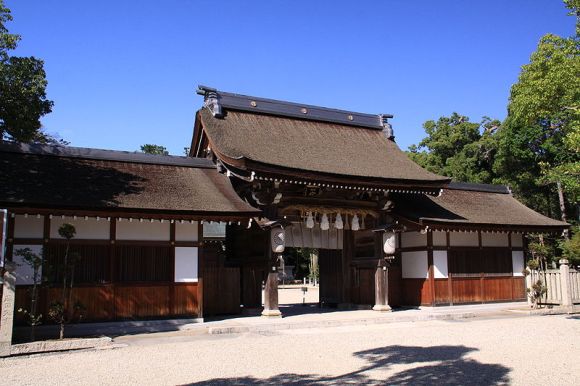
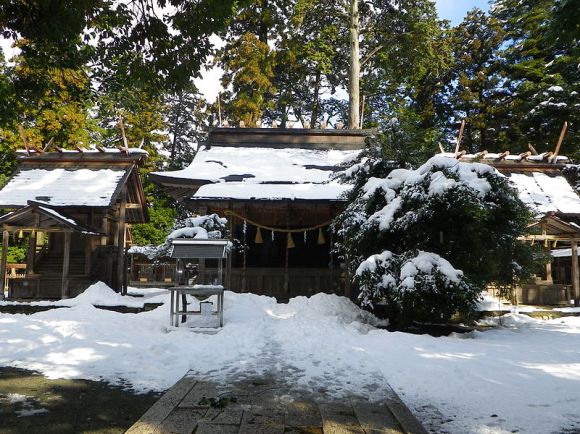
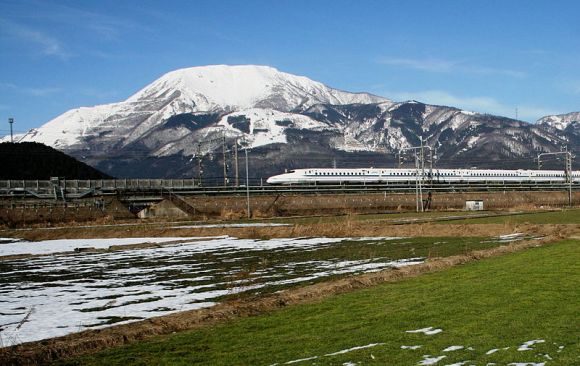
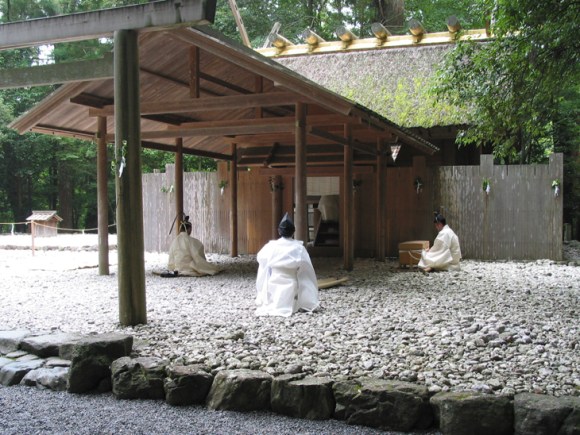
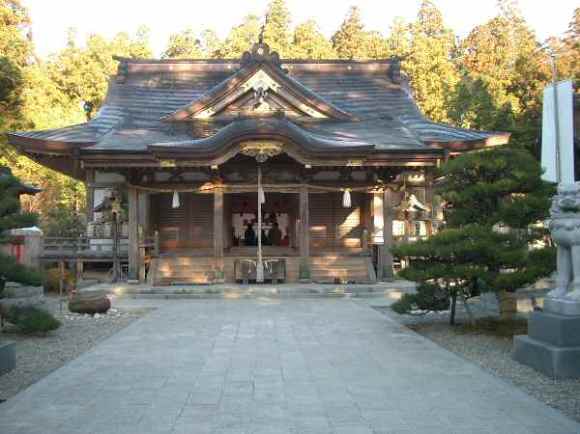
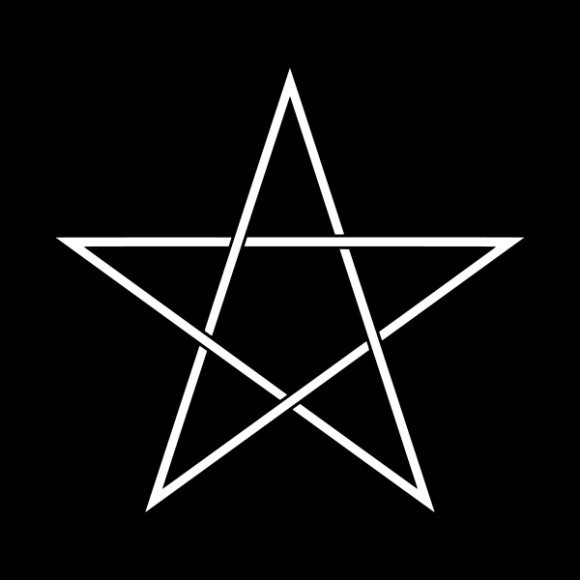
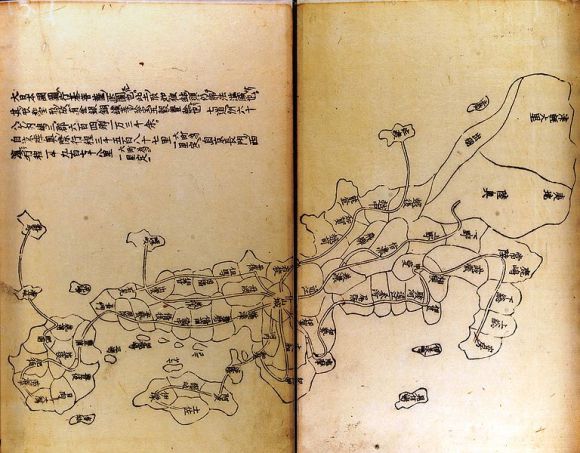
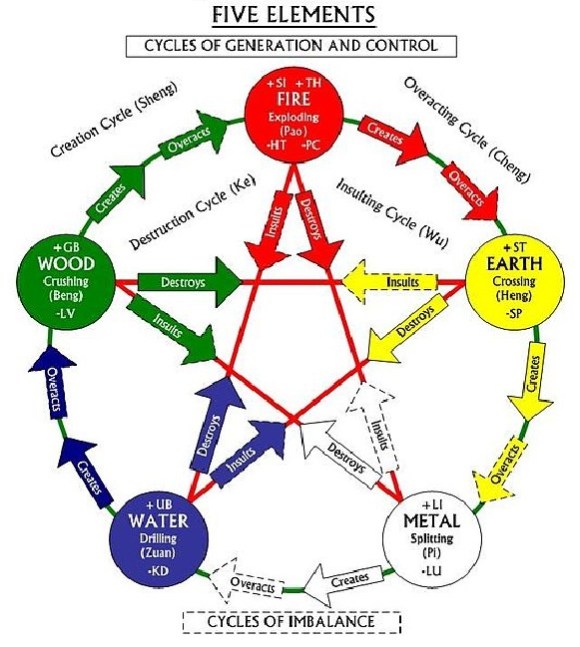
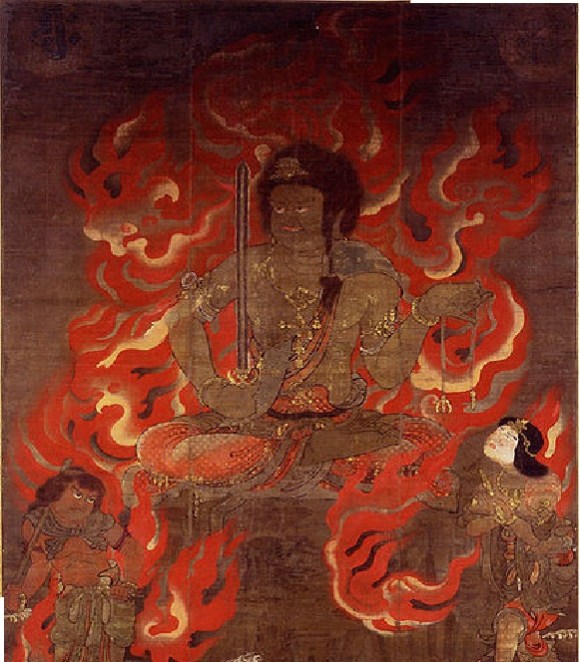
 Quiz time! How many of these photos of Japanese places can you identify?【Photos】
Quiz time! How many of these photos of Japanese places can you identify?【Photos】 TripAdvisor Japan announces the country’s 10 favorite shrines and temples
TripAdvisor Japan announces the country’s 10 favorite shrines and temples Travel around Japan with stunning videos from the 4K ultra HD video library
Travel around Japan with stunning videos from the 4K ultra HD video library Man strips, makes it rain atop stone lantern at Ise Jingu shrine in Japan
Man strips, makes it rain atop stone lantern at Ise Jingu shrine in Japan This Year of the Rabbit, visit some of the best Japanese sightseeing spots related to rabbits
This Year of the Rabbit, visit some of the best Japanese sightseeing spots related to rabbits Red light district sushi restaurant in Tokyo shows us just how wrong we were about it
Red light district sushi restaurant in Tokyo shows us just how wrong we were about it Japanese ramen restaurants under pressure from new yen banknotes
Japanese ramen restaurants under pressure from new yen banknotes Tokyo Tsukiji fish market site to be redeveloped with 50,000-seat stadium, hotel, shopping center
Tokyo Tsukiji fish market site to be redeveloped with 50,000-seat stadium, hotel, shopping center Starbucks Japan adds a Motto Frappuccino to the menu for a limited time
Starbucks Japan adds a Motto Frappuccino to the menu for a limited time Pokémon Sleep camping suite and guestrooms coming to Tokyo Hyatt along with giant Snorlax burgers
Pokémon Sleep camping suite and guestrooms coming to Tokyo Hyatt along with giant Snorlax burgers We try out “Chan Ramen”, an underground type of ramen popular in the ramen community
We try out “Chan Ramen”, an underground type of ramen popular in the ramen community McDonald’s new Happy Meals offer up cute and practical Sanrio lifestyle goods
McDonald’s new Happy Meals offer up cute and practical Sanrio lifestyle goods Akihabara pop-up shop sells goods made by Japanese prison inmates
Akihabara pop-up shop sells goods made by Japanese prison inmates Mt. Koya planning to instate visitor’s tax to cope with huge tourist numbers
Mt. Koya planning to instate visitor’s tax to cope with huge tourist numbers Studio Ghibli releases new action figures featuring Nausicaä of the Valley of the Wind characters
Studio Ghibli releases new action figures featuring Nausicaä of the Valley of the Wind characters All-you-can-drink Starbucks and amazing views part of Tokyo’s new 170 meter-high sky lounge
All-you-can-drink Starbucks and amazing views part of Tokyo’s new 170 meter-high sky lounge More foreign tourists than ever before in history visited Japan last month
More foreign tourists than ever before in history visited Japan last month French Fries Bread in Tokyo’s Shibuya becomes a hit on social media
French Fries Bread in Tokyo’s Shibuya becomes a hit on social media New private rooms on Tokaido Shinkansen change the way we travel from Tokyo to Kyoto
New private rooms on Tokaido Shinkansen change the way we travel from Tokyo to Kyoto Starbucks reopens at Shibuya Scramble Crossing with new look and design concept
Starbucks reopens at Shibuya Scramble Crossing with new look and design concept Studio Ghibli glasses cases let anime characters keep an eye on your spectacles
Studio Ghibli glasses cases let anime characters keep an eye on your spectacles Beautiful Ghibli sealing wax kits let you create accessories and elegant letter decorations【Pics】
Beautiful Ghibli sealing wax kits let you create accessories and elegant letter decorations【Pics】 Studio Ghibli releases Kiki’s Delivery Service chocolate cake pouches in Japan
Studio Ghibli releases Kiki’s Delivery Service chocolate cake pouches in Japan New definition of “Japanese whiskey” goes into effect to prevent fakes from fooling overseas buyers
New definition of “Japanese whiskey” goes into effect to prevent fakes from fooling overseas buyers Our Japanese reporter visits Costco in the U.S., finds super American and very Japanese things
Our Japanese reporter visits Costco in the U.S., finds super American and very Japanese things Studio Ghibli unveils Mother’s Day gift set that captures the love in My Neighbour Totoro
Studio Ghibli unveils Mother’s Day gift set that captures the love in My Neighbour Totoro New Japanese KitKat flavour stars Sanrio characters, including Hello Kitty
New Japanese KitKat flavour stars Sanrio characters, including Hello Kitty New Pokémon cakes let you eat your way through Pikachu and all the Eevee evolutions
New Pokémon cakes let you eat your way through Pikachu and all the Eevee evolutions Disney princesses get official manga makeovers for Manga Princess Cafe opening in Tokyo
Disney princesses get official manga makeovers for Manga Princess Cafe opening in Tokyo Sales of Japan’s most convenient train ticket/shopping payment cards suspended indefinitely
Sales of Japan’s most convenient train ticket/shopping payment cards suspended indefinitely Sold-out Studio Ghibli desktop humidifiers are back so Totoro can help you through the dry season
Sold-out Studio Ghibli desktop humidifiers are back so Totoro can help you through the dry season Japanese government to make first change to romanization spelling rules since the 1950s
Japanese government to make first change to romanization spelling rules since the 1950s Ghibli founders Toshio Suzuki and Hayao Miyazaki contribute to Japanese whisky Totoro label design
Ghibli founders Toshio Suzuki and Hayao Miyazaki contribute to Japanese whisky Totoro label design Doraemon found buried at sea as scene from 1993 anime becomes real life【Photos】
Doraemon found buried at sea as scene from 1993 anime becomes real life【Photos】 Tokyo’s most famous Starbucks is closed
Tokyo’s most famous Starbucks is closed One Piece characters’ nationalities revealed, but fans have mixed opinions
One Piece characters’ nationalities revealed, but fans have mixed opinions We asked a Uniqlo employee what four things we should buy and their suggestions didn’t disappoint
We asked a Uniqlo employee what four things we should buy and their suggestions didn’t disappoint Princesses, fruits, and blacksmiths: Study reveals the 30 most unusual family names in Japan
Princesses, fruits, and blacksmiths: Study reveals the 30 most unusual family names in Japan Genuine Muramasa blade and Muromachi katana on display at Tokyo’s Touken Ranbu store【Photos】
Genuine Muramasa blade and Muromachi katana on display at Tokyo’s Touken Ranbu store【Photos】 People in Japan go crazy for Japanese koi fish with love hearts on its eyes
People in Japan go crazy for Japanese koi fish with love hearts on its eyes Nara Park’s first baby deer of the year has been born, is totally adorable【Video】
Nara Park’s first baby deer of the year has been born, is totally adorable【Video】 Cool and fun paper craft from the makers of Akafuku — one of Japan’s favorite sweets!
Cool and fun paper craft from the makers of Akafuku — one of Japan’s favorite sweets! New Attack on Titan souvenir straps feature Colossal Titan at famous Japanese landmarks
New Attack on Titan souvenir straps feature Colossal Titan at famous Japanese landmarks A visit to Japan’s centuries-old boob temple
A visit to Japan’s centuries-old boob temple Nara considering increasing number of deer that can be killed each year, expanding culling zone
Nara considering increasing number of deer that can be killed each year, expanding culling zone Nara’s deer continue their summertime tradition of commandeering one of the city’s streets
Nara’s deer continue their summertime tradition of commandeering one of the city’s streets Shrine in Japan issues “beautiful woman certificates,” so we went to get one【Photos】
Shrine in Japan issues “beautiful woman certificates,” so we went to get one【Photos】 Refresh your mind, body, and soul at Temple Camp Daitaiji, the first temple to open to campers
Refresh your mind, body, and soul at Temple Camp Daitaiji, the first temple to open to campers Four things women are banned from doing in Japan【Women in Japan Series】
Four things women are banned from doing in Japan【Women in Japan Series】 Amazing pics from Kyoto/Nara “bullet tour” show no matter how tight your schedule, you should go
Amazing pics from Kyoto/Nara “bullet tour” show no matter how tight your schedule, you should go This tiny island you can walk to is a perfect snapshot of why Japan is an amazing place to travel
This tiny island you can walk to is a perfect snapshot of why Japan is an amazing place to travel The most popular places in Japan for viewing sakura in 2024, according to local travel agency
The most popular places in Japan for viewing sakura in 2024, according to local travel agency
Leave a Reply